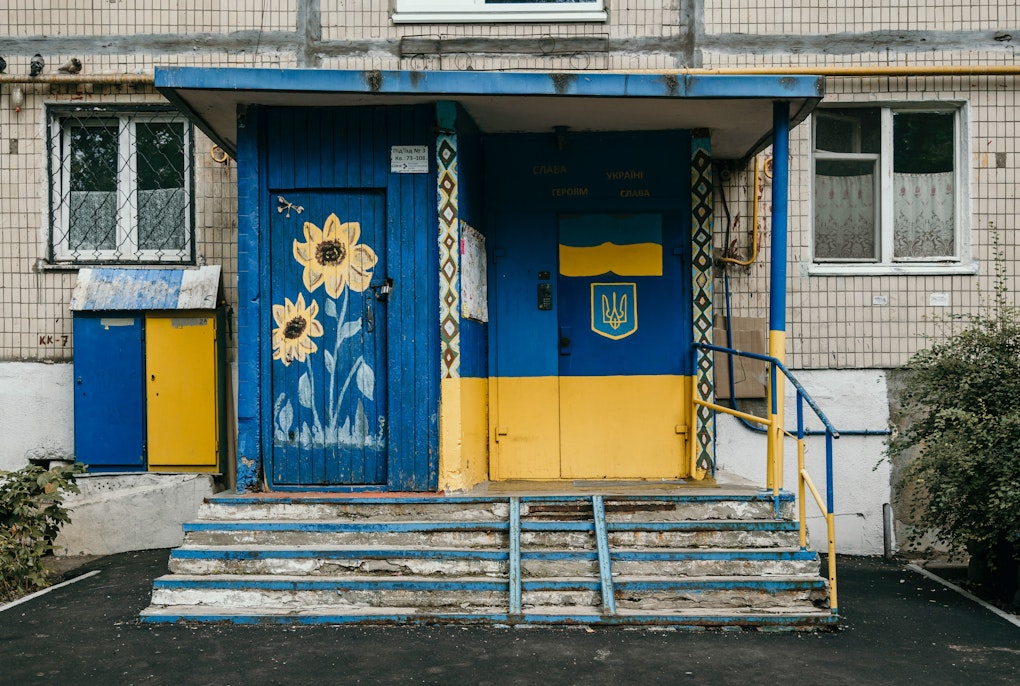
“Kyiv is under siege and so is democracy!“ Ukraine as a new EU member? The return of politics to EU integration
 Jens Woelk
Jens Woelk
The advent of democracy with the approval of the 1978 Constitution initiated a process of enormous structural changes that have shaped modern Spain. In this regard, the territorial decentralization of power which gave birth to a quasi-federal state was one of the most significant. This process of modernization and rationalization has not extended, however, to the local level, which has hardly undergone any transformation since 1833.
Spain with 47.3M inhabitants ranks third in the European Union in terms of the highest number of municipalities, with a total of 8,131, behind France with 39,965 municipalities and 67.3M inhabitants, and Germany - 11,014 municipalities, 83.2M inhabitants and ahead of Italy 7,914 municipalities and 59.5M inhabitants. This high number of local authorities in a country where 80% of the population lives in concentrated urban areas is due to the rural exodus of the post-war period and has resulted in many sparsely populated towns. Around 62% of Spanish municipalities have less than 1,000 inhabitants, with 17% having a population of less than 100 individuals. The difficulties presented by small municipalities to generate economies of scale when providing public services, with their consequent increase in costs, has led the central government to implement measures to encourage the merging of municipalities with the aim of “rationalizing their structures and overcoming the atomization of the municipal map”. Law 27/2013 on the rationalization and sustainability of the Local Administration rewarded the municipalities that opted to merge with higher tax allocations and priority when obtaining subsidies from the State, as well as established the procedure to be followed, with the merger agreement having only to be approved by a simple majority in each of the City Councils. In the event that the merger materialized, it could not be undone until ten years had passed. Despite the fact that the provisions of Law 27/2013 have aroused some interest, its application has practically been non-existent. In fact, in the last 40 years there have only been two mergers of municipalities in Spain. The first of these in 2013, a few months before Law 27/2013 came into force, was the union of Oza dos Ríos with 3,227 inhabitants and Cesuras with 2,174 in Galicia, which merged to become Oza-Cesuras. Three years later, also in Galicia, the second merger took place with the creation of Cerdedo-Cotobade from the union of Cerdedo, 1,781 inhabitants and Cotobade, 4,290. Neither of these two mergers can be described as successful. Both were top-down processes driven by the ruling elite that only took place on paper, with the reality resembling a forced marriage - with no referendum to assess the will of their inhabitants-, seemingly characterized by a division of belongings rather than integration. Thus, as it is easy to observe, municipal mergers are an infrequent phenomenon in Spain, as they are countercultural phenomena in which local identities are strongly rooted and their small number contrasts with the creation of no less than 85 new municipalities since 1987.
The possibility of a new local merger made the headlines again in 2021 when two municipalities in Extremadura that coexist 4km apart, Don Benito with 37,275 inhabitants and Villanueva de la Serena with 25,837, announced their plans to merge into a new town that would become the third largest in Extremadura in terms of population and the second in terms of GDP. This idea of merging was not new, as it had already been raised unsuccessfully in the past - most recently in 2004. However, the mayors of both localities intended this to be definitive and decided to make the merger conditional, based on garnering a 66% majority of popular support in a referendum. Making the merger subject to popular approval in a consultation called specifically for this purpose, was a singular novelty, especially in a country that has always looked askance at referendums, even more so after the secessionist crisis in Catalonia. Not in vain, both municipalities had to apply to the Council of Ministers for the approval of a non-binding consultation following the provisions of Article 71 of the Ley reguladora de las Bases del Régimen Local. This was granted in November 2021 with the referendum scheduled for February 20, 2022. The authorization kickstarted a process to convince the public that the merger was in the best interest of both municipalities. In principle, this did not seem to incur any major difficulties since all political parties, in an unusual coincidence, firmly supported the merger of the two municipalities, which had already shared different services for years. In fact, the self-imposed objective - since this does not appear in the decree approved by the central government - of reaching 66% support from both municipalities in order to ensure the irreversibility of the merger, did not seem to be a significant obstacle as it was widely perceived that the majority of the population was in clear favor.
The calm campaign was dominated by the bright economic future that the union would bring. Promises of new investments, increased funding from the central government, improved public services, higher wages, and rates of employment and a host of projects to develop together after the union began to inundate the weeks leading up to the referendum. However, in the midst of this apparent calm, fate had a final dramatic twist in store. When the polls closed and while the champagne was cooling, the first results seemed disconcerting. The “yes” to the union had comfortably won in Villanueva while in Don Benito, despite being the winning option, it was slightly below 66% with half of the votes counted. In the midst of a tension that no one expected, chaos erupted. The website reporting the referendum’s results stopped functioning properly, giving contradictory results until it finally stopped working all together. After several hours of tension, meetings behind closed doors, a shadow recount and some controversy due to the information blackout, the definitive results were published after midnight. In Villanueva de la Serena, 90.49% of the votes were in favor, while 9.03% voted against, with a 58.94% turnout. On the other hand, in Don Benito, support for the merger was 66.27% with 33.21% voting against with a 50.42% turnout. By just a couple of votes (0.27%), the objective was achieved and both mayors celebrated the upcoming merger in the early hours. Even so, the computer fiasco spoiled the expected party - the champagne stayed in the fridge - and more than a few will have doubts about the outcome and what happened during the long and tense hours of waiting.
The choice of marking 66% of votes as a "clear majority" - a la Canada - nearly became a double-edged sword for the union's supporters. In fact, beyond guaranteeing the irreversibility of the union by sealing it with strong popular support, there have been no detailed explanations as to why that figure was chosen. More than one will surely be thankful not to have mentioned two-thirds as the magical figure, because in that case the result would have appeared anticlimactic. The causes of the unexpected rise of the “no” vote in Don Benito were not clear. No political formation defended it and there were hardly any public manifestations in this sense. However, the importance of social networks being the ideal vehicle to bring together the critics of the merge once again went unnoticed. A stronger more rooted local identity? Historical rivalries between neighbors? The fear that the larger town would receive fewer benefits than the smaller one? Questions that will have to be resolved on the long path towards a union which will only reach completion in 2027. In the meantime, the process has just started. The first step is to choose a name for the newborn town, another aspect that aims to differentiate it from Galicia’s previously failed mergers and one which will mark a new beginning in the Guadiana’s upper valley. The most complicated step has already been taken, now come years of long bureaucratic efforts to materialize the union and reap its expected benefits. Long life to the new - still unnamed - town!
The project DATE has received funding financed in in the frame of the Seal of Excellence Program of the Autonomous Province of Bolzano/Bozen - South Tyrol, Department for Innovation, Research and University.

This content is licensed under a Creative Commons Attribution 4.0 International license.

 Jens Woelk
Jens Woelk
 Mariachiara Alberton
Mariachiara Alberton
 Nicole De Palmenaer
Nicole De Palmenaer